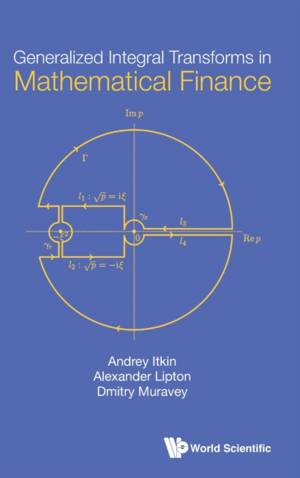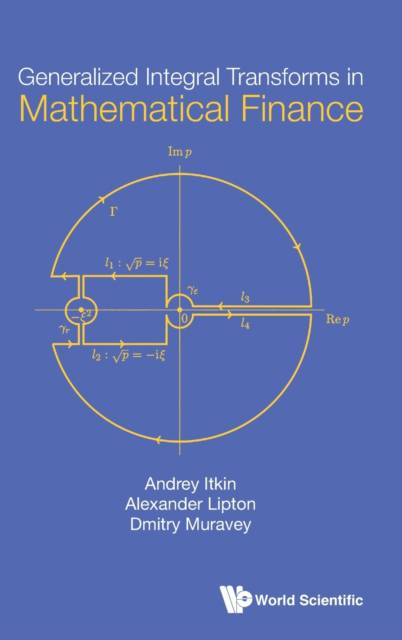
Bedankt voor het vertrouwen het afgelopen jaar! Om jou te bedanken bieden we GRATIS verzending (in België) aan op alles gedurende de hele maand januari.
- Afhalen na 1 uur in een winkel met voorraad
- Gratis thuislevering in België vanaf € 30
- Ruim aanbod met 7 miljoen producten
Bedankt voor het vertrouwen het afgelopen jaar! Om jou te bedanken bieden we GRATIS verzending (in België) aan op alles gedurende de hele maand januari.
- Afhalen na 1 uur in een winkel met voorraad
- Gratis thuislevering in België vanaf € 30
- Ruim aanbod met 7 miljoen producten
Zoeken
Generalized Integral Transforms in Mathematical Finance
Andrey Itkin, Alexander Lipton, Dmitry Muravey
Hardcover | Engels
€ 256,45
+ 512 punten
Omschrijving
This book describes several techniques, first invented in physics for solving problems of heat and mass transfer, and applies them to various problems of mathematical finance defined in domains with moving boundaries. These problems include: (a) semi-closed form pricing of options in the one-factor models with time-dependent barriers (Bachelier, Hull-White, CIR, CEV); (b) analyzing an interconnected banking system in the structural credit risk model with default contagion; (c) finding first hitting time density for a reducible diffusion process; (d) describing the exercise boundary of American options; (e) calculating default boundary for the structured default problem; (f) deriving a semi-closed form solution for optimal mean-reverting trading strategies; to mention but some.The main methods used in this book are generalized integral transforms and heat potentials. To find a semi-closed form solution, we need to solve a linear or nonlinear Volterra equation of the second kind and then represent the option price as a one-dimensional integral. Our analysis shows that these methods are computationally more efficient than the corresponding finite-difference methods for the backward or forward Kolmogorov PDEs (partial differential equations) while providing better accuracy and stability.We extend a large number of known results by either providing solutions on complementary or extended domains where the solution is not known yet or modifying these techniques and applying them to new types of equations, such as the Bessel process. The book contains several novel results broadly applicable in physics, mathematics, and engineering.
Specificaties
Betrokkenen
- Auteur(s):
- Uitgeverij:
Inhoud
- Aantal bladzijden:
- 508
- Taal:
- Engels
Eigenschappen
- Productcode (EAN):
- 9789811231735
- Verschijningsdatum:
- 28/10/2021
- Uitvoering:
- Hardcover
- Formaat:
- Genaaid
- Afmetingen:
- 152 mm x 229 mm
- Gewicht:
- 843 g

Alleen bij Standaard Boekhandel
+ 512 punten op je klantenkaart van Standaard Boekhandel
Beoordelingen
We publiceren alleen reviews die voldoen aan de voorwaarden voor reviews. Bekijk onze voorwaarden voor reviews.









